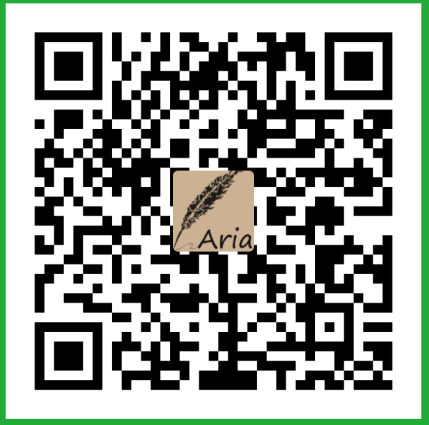wxPython 教程(十) 国际化
转自:http://thisis.yorven.site/blog/index.php/2017/10/10/wxpython-jiaocheng-shi-guojihua/
国际化和本地化是电脑软件适应非本地环境的方法,尤其是在其他国家和文化环境下。国际化是指确保一个应用能够适应本地的需求,比如保证本地的书写系统可以展示。本地化则是指将应用尽可能的适应特定地域,使用当地语言、当地习惯等等。本节主要讲解 wxPython 国际化 问题。
Unicode
wxPython 有两种构建, ANSI 和 Unicode。如果我们想创建非英语的 wxPython 应用,我们必须使用 Unicode 构建。
Unicode 是一个工业标准,它允许世界范围内的任意电脑可以一致的展现、操作任何文字,它是一个以 16 位存储字符的文本编码标准。传统的 ASCII 编码只使用 8 位。
首先,我们需要得到 Лев Николaевич Толстoй Анна Каренина 的 Unicode 编码。
>>> unicode(u'Лев Николaевич Толстoй Анна Каренина') |
我们打开 Python 终端,使用 unicode() 函数调用。注意在下面的例子中,我们使用了回车符将文字划分为两行。
#!/usr/bin/python |
在例子中,我们用俄语西里尔字母绘制了英语的 Anna Karenina。
Locale
一个 locale 是一个定义了用户的语言、国家、数字格式、字母格式、货币格式等的对象。一个 local 变量有以下格式:[language[_territory][.codeset][@modifier]]
比如,de_AT.utf8 是指澳洲使用的德语 local,使用 UTF8 编码集。
#!/usr/bin/python |
我们使用了标准的模块 locale 来进行本地化设置。在例子中,我们使用了多种格式的日期、时间和货币,包括美国、德国和斯洛伐克。
locale.setlocale(locale.LC_ALL, ('de_DE', 'UTF8')) |
这里,我们设置了德语的 locale 对象。LC_ALL 是多个本地化设置的组合,比如 LC_TIME, LC_MONETARY 和 LC_NUMERIC。
date = time.strftime('%x', tm) |
这些函数调用展示了当前的 locale 对象。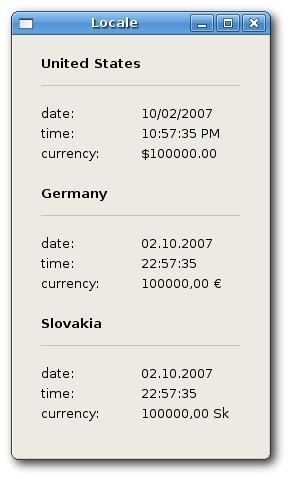
世界时间
在某一时刻,世界各地的国家时间都不相同,因为地球被划分成了不同的时区。对于程序员来说,处理这样的事情并不稀奇。wxPython 的 wx.DateTime 对象可以用来做这些事情,它代表了一个绝对的时刻(据文档)。
#!/usr/bin/python |
在上面的例子中,我们显示了东京、莫斯科、布达佩斯、伦敦和纽约的当前时间。
self.dt = wx.DateTime() |
我们创建了 wx.DateTime 对象。
now = self.dt.Now() |
我们设置了绝对时刻。
self.tokyo.SetLabel('Tokyo: ' + str(now.Format(('%a %T'), |
这一行设置时间为特定的格式。%a 是指当前 locale 下的 weekday 名称。 %T 是指使用格式 %H:%M:%S 的十进制数字。Format 的第二个参数定义了时间区间, GMT_9 在日本使用,EDT 在纽约使用,等等。
可以通过 timeanddate.com 网站来检查样例的结果。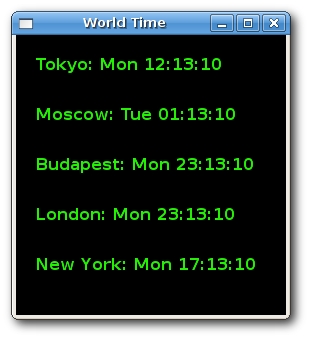
排序
Locale 设置也会影响字符串排序的方式。比如匈牙利语有一些字符是斯洛伐克语和英语里没有的。一些语言有重读字符,有些则没有。
#!/usr/bin/python |
在这个例子中,我们从字典中找了 5 个德语单词。默认的 sort() 函数的排序结果是:Sabotage, Schläfe, Sund, Säbel, Sünde。然而这是错的,因为在德语中 ä 比字母要优先。为了得到正确的排序结果,我们必须使用 locale 函数。
locale.setlocale(locale.LC_COLLATE, ('de_DE', 'UTF8')) |
这里,我们使用了 LC_COLLATE,当然也可以直接使用 LC_ALL 选项。
words.sort( lambda a,b: locale.strcoll(a, b) ) |
技巧在于这里在 sort() 函数中使用了新的比较方法。我们定义了一个 lambda 函数, strcoll() 函数比较两个字符串,和默认一样返回 -1,0和1,但它会考虑 locale 设置,这样我们才会得到正确的单词排序。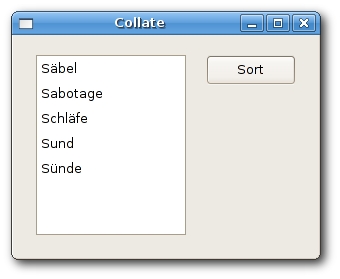
简单翻译
在下面的例子中,我们展示一个非常基础的翻译。
对于翻译,编程者可以有两个选择,一个是使用 GNU 的 gettext,另一个是使用 wxPython 的 catalogs,这两个是兼容的。
wxPython 有一个类叫 wx.Locale,它是使用信息 catalogs 的基础。每个翻译有一个 catalog。如果我们想把一个字符串翻译成德语,首先,我们必须确保我们系统中拥有对德语的语言支持。‘’
$ locale -a |
使用 locale 命令可以检查系统支持什么语言。在原作者的系统中,支持英语、德语和斯洛伐克语。英语和德语有不同地方的版本,所有会有很多种语言支持。注意到 _utf8_,这意味着系统对字符串使用的是 utf8 编码支持。
现在我们进行编码。我们把需要翻译的字符串放到 _(),或者可以使用 wx.GetTranslation()。
#!/usr/bin/python |
现在我们创建一个 PO 文件,它是一个简单的文本文件,翻译器使用它来翻译字符串。
pygettext -o simple_de.po simple.py |
我们使用 pygettext 命令是创建 po 文件,为了完整的理解 po 文件,可以参考 GNU 的 gettext 手册。
"Content-Type: text/plain; charset=utf-8\n" |
我们编辑 simple_de.po 文件,必须定义字符集,这里我们设置为 utf-8。
#: simple.py:17 |
这里,我们提供了一个对 ‘hello’ 字符串的翻译。
最后我们要做的事情是创建一个二进制的信息 catalog。
msgfmt --output-file simple_de.mo simple_de.po |
我们使用了 msgfmt 命令来创建 mo 文件。
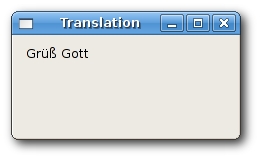
在本节中,我们主要讲解 Unicode 字符。
wxPython 教程(十) 国际化

